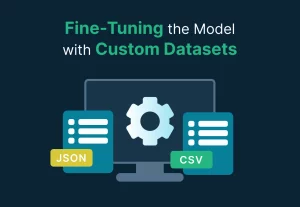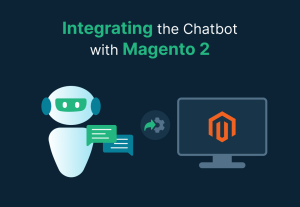In today’s world of NLP models and Generative AI, providing top-notch customer support and tailored experiences is key to thriving in online commerce. One effective way to achieve this is by integrating a ChatGPT like chatbot into your E-Startups Kenya online store.

1. Defining the Scope and Purpose of Your Chatbot
To start, it’s crucial to clarify the specific scope and purpose of your chatbot within your E-Startups Kenya store. This involves identifying what tasks your chatbot will handle, both for front-end customers and backend admin users.

a) Product Inquiries
Your chatbot can assist customers with questions about product features, availability, pricing, and specifications, enhancing their shopping experience.

b) Order Status Queries
Provide real-time updates to customers about their order statuses, ensuring transparency and customer satisfaction.

c) Recommendations
Offer personalized product recommendations based on customers’ preferences and purchase history, guiding them towards products they’ll love.

d) General Support
Offer general assistance to customers, answering FAQs, providing store information, and guiding users through various tasks like account registration or password resets.

e) Chatbot for Backend Admin
Assist backend admin users with troubleshooting, configuration, and guidance, streamlining store management tasks.
2. Collecting and Preparing Custom Datasets
Gather and prepare datasets containing relevant customer queries and corresponding responses to train your chatbot effectively.
a) Real Interactions
Utilize past customer support conversations and live chat transcripts to create a training dataset, ensuring it covers a wide range of scenarios.
b) Synthesized Conversations
If real conversations are unavailable, synthesize conversations covering various scenarios to train your chatbot effectively.
c) Product Catalog
Integrate your chatbot with the Magento 2 catalog database to provide detailed and up-to-date product information to customers.
d) Customer Data
Leverage customer data stored in Magento 2 to personalize the chatbot’s responses and provide tailored recommendations.
e) Order Management System
Connect the chatbot with the Magento 2 order management system to provide real-time updates on order statuses and assist customers with queries about shipping and delivery.
f) FAQs and Knowledge Base
Integrate the chatbot with your store’s FAQs and knowledge base to provide quick and accurate responses to commonly asked questions.
3. Training Language Model
Train your chatbot’s language model using supervised fine-tuning or reinforcement learning techniques to optimize its conversational abilities.
4. Fine-Tuning the Model with Custom Datasets
Fine-tune the pre-trained language model with your custom datasets to align it with the specific requirements of your E-Startups Kenya store.
5. Integrating ChatGPT Like Chatbot with E-Startups Kenya
Integrate your chatbot with the E-Startups Kenya platform to enable seamless interactions with customers and streamline store management tasks.
6. Deployment and Monitoring
Deploy your chatbot to a production environment and monitor its performance, collecting user feedback and continuously refining and updating it to meet evolving customer needs.
In Summary, Building a ChatGPT Like Chatbot for E-Startups Kenya offers a powerful way to enhance customer experiences and provide personalized support, ultimately driving success in online commerce. Explore E-Startups Kenya’s large language model development services to integrate cutting-edge AI technologies into your business seamlessly.




























